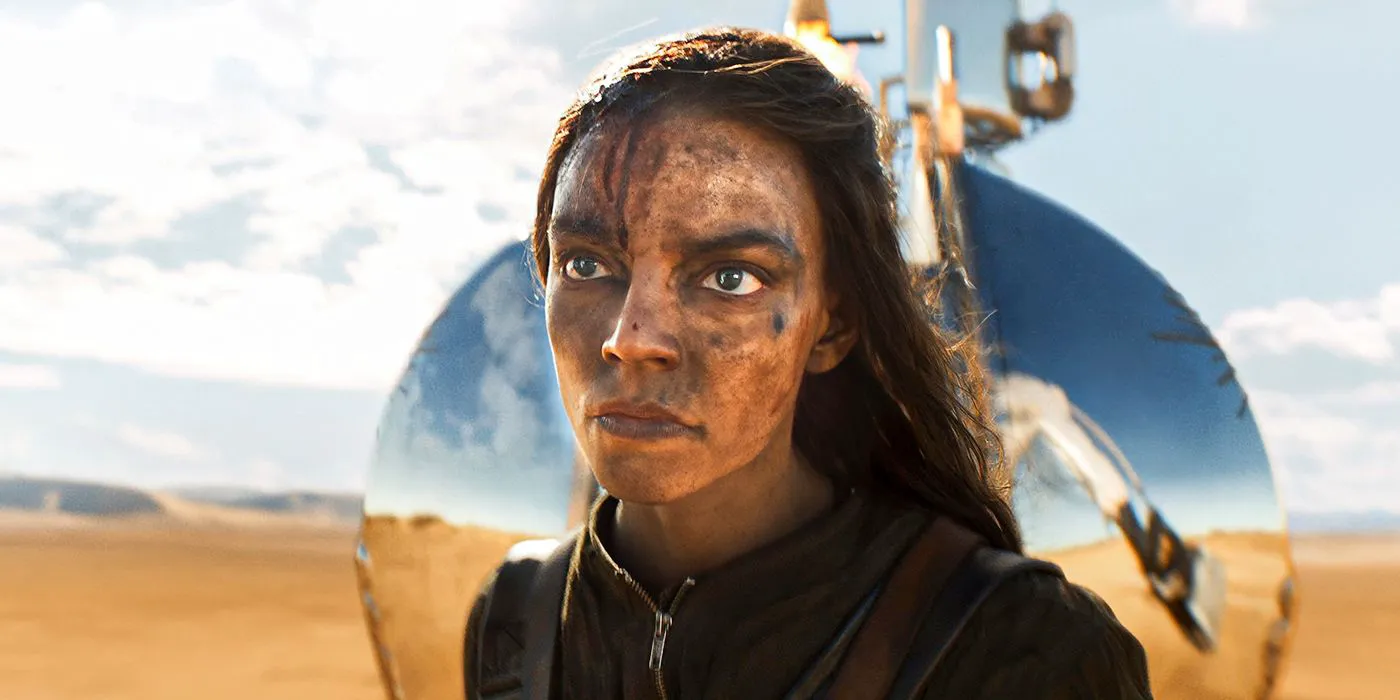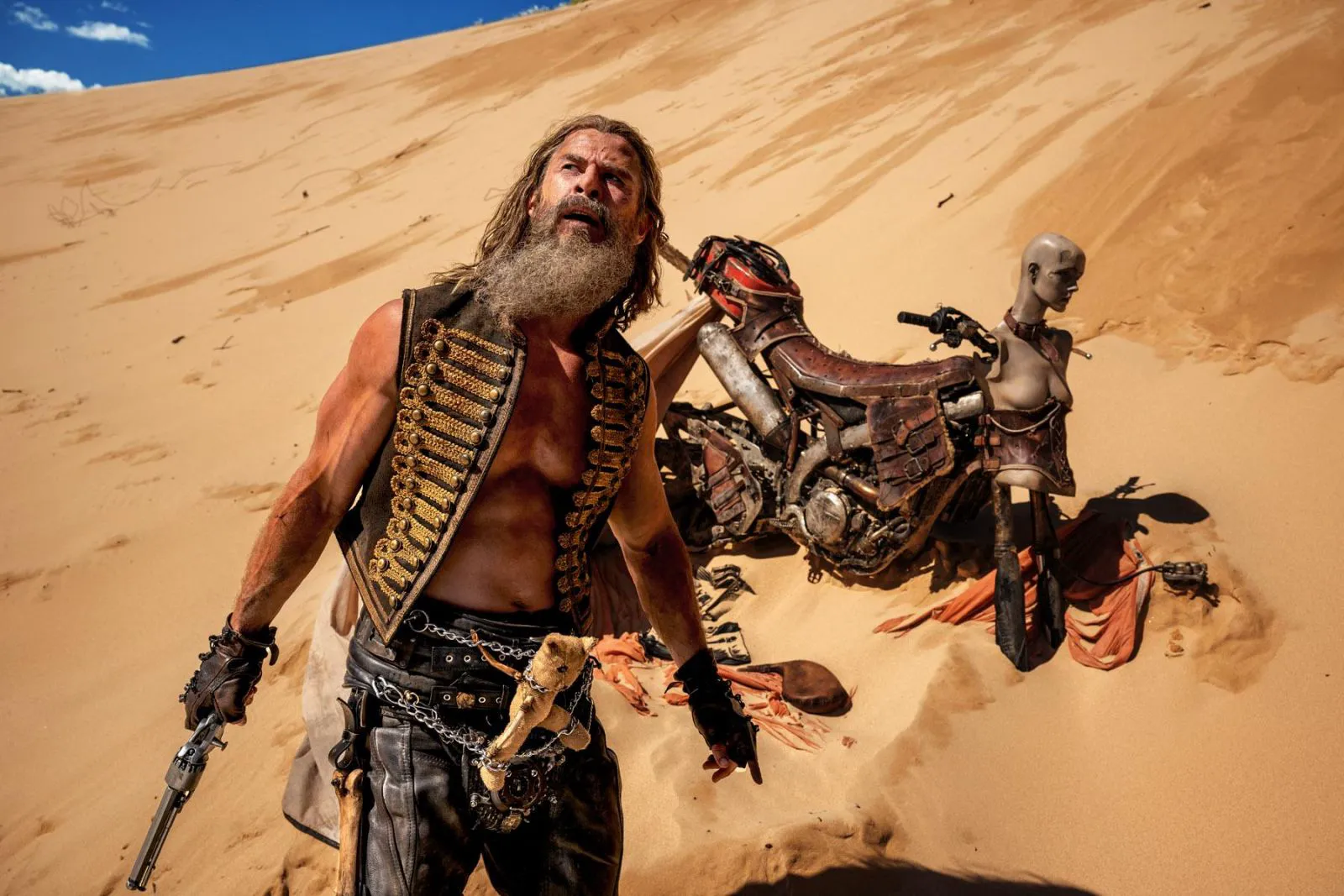The world as we knew it has been shattered by atomic wars, wiping out most civilizations and reducing humanity to a tribal existence. In the heart of Australia, a settlement called “Green Lands” miraculously survives. Here, people live peacefully under the leadership of women, cultivating peaches and other crops amidst lush forests. Furiosa (Alyla Browne) grows up in this paradise amidst the deserts, but her youthful restlessness leads to her capture by Dementus (Chris Hemsworth), a warlord and cult leader who rides a Roman chariot made of three motorcycles. Her mother attempts to rescue her but is killed by the tyrant. Before her death, she gives Furiosa a peach pit, urging her to protect their cherished sanctuary.
Years pass, and Dementus seeks to expand his power. He challenges Immortan Joe (Lachy Hulme), another cult leader and ruler of the mountain city of the Citadel, which controls access to clean water. The conflict culminates in Dementus seizing Gastown, a fortress-factory that produces fuel. In negotiations, he trades Furiosa (Anya Taylor-Joy) to Joe in exchange for supplies, promising not to attack. From then on, Furiosa lives in the Citadel, never forgetting her desire for revenge against Dementus and her dream of returning home.

Anya Taylor-Joy as Furiosa in a still from “Furiosa: A Mad Max Saga”
A Blockbuster with Vision
Looking at the most anticipated blockbusters of 2024, many are sequels to well-known franchises. Often, the desire to continue a successful project turns into exploitation, attempting to feed the same story to the audience again (a prime example being the “Jurassic World” franchise). “Furiosa: A Mad Max Saga,” a post-apocalyptic action film, could have fallen victim to scriptwriting impotence and the greed of Hollywood executives, were it not for the talent of director George Miller. While his original “Mad Max” trilogy (1979-1985) reflected people’s fears of the Cold War and panic over the fuel crises of the 70s, the fourth installment, “Mad Max: Fury Road,” shifted the perspective towards a pro-feminist lens, making the warlord Furiosa (Charlize Theron) the second main character. This change in perspective is an important evolutionary step for the post-apocalyptic genre, which is usually dominated by hyper-masculine figures. In “Fury Road,” Miller mocks the cult of masculinity, contrasting the order of the decrepit Immortan Joe, whose decaying body requires constant care, with the young Furiosa, who believes in a world without unnecessary bloodshed.

Chris Hemsworth as Dementus in a still from “Furiosa: A Mad Max Saga”
A Saga of Destruction and Rebirth
“Furiosa: A Mad Max Saga” is a spin-off and prequel to the previous installment, expanding the lore of the franchise and elevating the pathos of the action to the level of the collapse and resurrection of civilizations. George Miller weaves the story of tyrannical leaders and one person’s attempt to resist a brutal system into the structure of ancient Greek poems (such as Homer’s “Iliad”). Almost all events have a perfect mirror reflection: what happens at the very beginning will be repeated in the finale, but with a different meaning. The beautiful structure of the plot is framed by roaring engine action, where pieces of brains fly into the camera lens and cars are ground into iron mush. Millisecond-precise editing, clear sound, and visual solutions maintain the dynamics and show the director’s sense of taste, an awareness of the aesthetics of his own work.

Anya Taylor-Joy as Furiosa in a still from “Furiosa: A Mad Max Saga”
Hope Amidst the Wasteland
Through the beauty and filth of bloodshed, where the poor collect maggots from corpses and then eat them, George Miller reflects on humanity’s tendency towards self-destruction and recovery. The rulers of the cities in the world of “Mad Max” have the power and resources to ensure the normal existence of people, but instead, they think about imperial grandeur and try to delay their demise as long as possible. Stolen from the “Green Lands,” Furiosa becomes a symbol of recovery and hope. She rises time and again after the blows of fate to fight a new battle. The secret of such resilience lies in the deep belief that even in the darkest times, one must remember another, brighter life that can be achieved by planting a seed of good in soil defiled by evil.